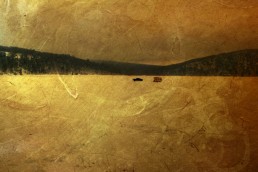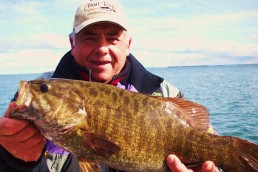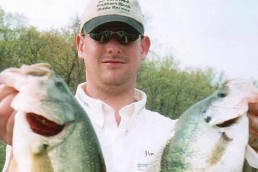SHARE THIS POST
I’m seeing all the signs of spring—robins catching worms, flights of Canadian geese heading north, the bear that raided my garbage can last night, and even news of brother Capt. Peter Dahl migrating from Texas to Minnesota. But I’ve also heard reports of smaller boats catching cohos trolling the nearshore areas between Duluth and Two Harbors.
Soon, reports of catches of cohos from the south pier of the ship canal will begin. For those without a boat who want to get in on some salmon-catching action, the south pier is a great option. The most common way to catch them is with a nightcrawler and a bobber. Two lines are allowed on Lake Superior—except at river mouths—so it’s possible to use two rods with nightcrawlers or one rod with a ‘crawler or another rod for casting small spoons or spinners. Ideally, it’s great to have a very long-handled net to land fish. However, it’s possible to walk them down to the sand beach to land them. When the fish are present here there’ll be a lot of people around—someone who has a net should be present and might help you land your fish.
Other good places to fish from land for early-season cohos include the McQuade Small Craft Harbor breakwall and the breakwall at Two Harbors.
Are you enjoying this post?
You can be among the first to get the latest info on where to go, what to use and how to use it!
Fishing on Lake Superior in small boats in May is common, and there are several places to launch from where you can stay close to a shelter and still fish for cohos near the shore. Superior entry, Duluth entry, the mentioned McQuade Harbor, Knife River and Two Harbors, are all primary spots on the Minnesota side. There are many others on the Wisconsin side as well.
The usual method for trolling for cohos is through the use of inline planer boards and pulling stickbaits about 100 feet back. Look for mud lines, bug slicks and temperature breaks that concentrate fish.
Safety is the most important thing now on Lake Superior. Be sure to always check the marine forecast and keep and eye on the wind and weather constantly. Easterly winds are especially common in May and in 30 minutes flat calm seas can become treacherous with 3-foot waves. Also, don’t forget all required safety equipment with a PFD for each person, throwable flotation devices, flares, navigation lights and a horn or whistle.
MWO
SHARE THIS POST
Did you enjoy this post?
You can be among the first to get the latest info on where to go, what to use and how to use it!



